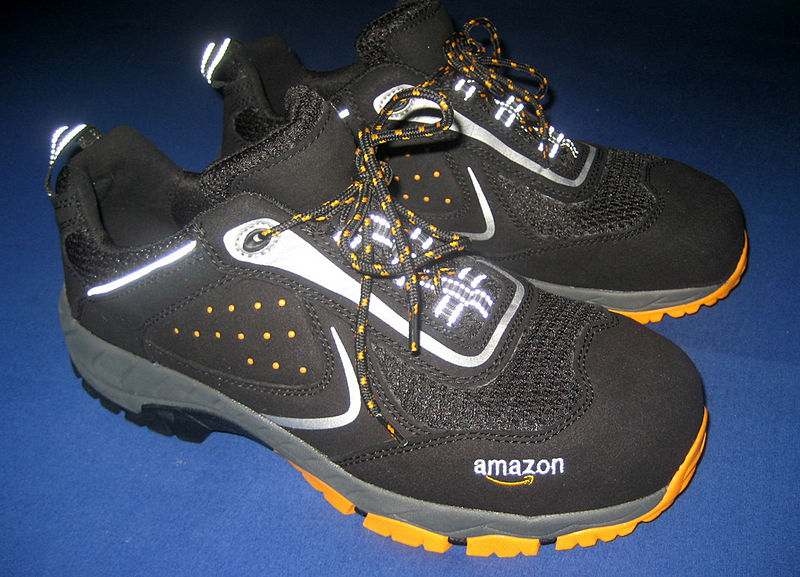Now that interest and enthusiasm for daily deals sites, such as Groupon, LivingSocial, and Google Offers have begun to wane, a new wave of social media of platforms lies in their wake. Location-based services, such as Yelp and Foursquare are being heavily targeted to small businesses as a way to increase sales and customer engagement.
 But location-based social media is far from the holy grail model of small business success. To make it work, you need to approach it all with a solid strategy. Here are some tips to make location-based social media work for your business and not against it:
But location-based social media is far from the holy grail model of small business success. To make it work, you need to approach it all with a solid strategy. Here are some tips to make location-based social media work for your business and not against it:
Know your business. Many small business owners learned the hard way that offering daily deals just wasn’t good for them and their business model. The same can be said of using location-based services to entice customers to patron your business. If you are constantly having to cut into your profit margins with discounts that don’t bring repeat business or you are unfamiliar with these platforms and are having a hard time eliciting user engagement and interest, then it may not be for you.
The bottom line here is that you need to be realistic regarding how well these kinds of services will fit into your business, how adept you can expect to be with them, and what kinds of offers and enticements you can comfortably support to drum up interest and sales.
Know your customers. Even if you know that you can comfortably carry out a savvy marketing campaign on Foursquare and the like, you have to make sure that your customers are the kinds of people who would use such services. If most of your customers aren’t there already, then don’t bother spending inordinate amounts of time and money trying to drag them there.
If they are on the network, then first spend some time learning how they use it and what is important to them.
Make it simple. Give customers who check-in a small reward for doing so, such as a discount or coupon, and maybe offer a different reward for customers who leave a recommendation for your business on the network. You can use this service like a loyalty program. Make sure your rewards are clear, meaning customers know what they are getting when they perform certain actions, and that you follow through.
Make it worth their while. This is extremely important… While you don’t want to break the bank with offers that are too costly, you still want to make sure that the reward is connected to the level of effort required to access it. And building on the last point above, make sure that you acknowledge and reward active users. These are the people who take the time to leave recommendations, upload photos of the business, or leave other “tips” to future customers. Having such people on board is extremely valuable to your business because they are helping you promote your products and services. Woo them!!! The worst thing you can do is totally ignore their efforts.
In short, using location-based social media platforms in your marketing mix, may or may not be right for your business. If you consider the points above, you can save yourself a whole lot of headache later on and money, too, and which small business owner doesn’t want that?


 1. Big banks settle on mortgage falsification reports. In February of 2012, 17 of the biggest banks in the US, including Bank of America, HSBC, and Morgan Stanley, collectively agreed to pay $25 billion to settle allegations by state and federal officials that they used falsified documents to evict homeowners facing foreclosure. Many critics of the deal pointed out, however, that the real perpetrators of the mortgage meltdown were basically getting off scot free, paving the way for some other, future financial crisis.
1. Big banks settle on mortgage falsification reports. In February of 2012, 17 of the biggest banks in the US, including Bank of America, HSBC, and Morgan Stanley, collectively agreed to pay $25 billion to settle allegations by state and federal officials that they used falsified documents to evict homeowners facing foreclosure. Many critics of the deal pointed out, however, that the real perpetrators of the mortgage meltdown were basically getting off scot free, paving the way for some other, future financial crisis. 2. The fateful Facebook IPO fail. One of the most ballyhooed tech IPO’s of the decade, ended in a colossal fail. The stock’s May offering was marred by technical glitches and chaotic trading, but that was just the start of the stock’s woes in 2012. The company’s share prices plummeted after its $38 debut, trading below $20 in August. The stock has remained well below its IPO throughout the year. Industry analysts claim that the stock’s poor performance, coupled with a string of high profile tech let-downs (think Groupon, Zynga, etc) has spooked VC investors, making it more difficult for Silicon Valley startups to get financial backing.
2. The fateful Facebook IPO fail. One of the most ballyhooed tech IPO’s of the decade, ended in a colossal fail. The stock’s May offering was marred by technical glitches and chaotic trading, but that was just the start of the stock’s woes in 2012. The company’s share prices plummeted after its $38 debut, trading below $20 in August. The stock has remained well below its IPO throughout the year. Industry analysts claim that the stock’s poor performance, coupled with a string of high profile tech let-downs (think Groupon, Zynga, etc) has spooked VC investors, making it more difficult for Silicon Valley startups to get financial backing. 3. Global economic slowdown. With all the turmoil among the European Union and a tepid U.S. economic recovery, strong growth among developing countries had been a persistent bright spot. But that began to change as emerging markets like China faced a manufacturing slowdown and India began its battle with inflation. In July, the International Monetary Fund lowered its forecasts for global growth further fueling fears of a word-wide economic slowdown.
3. Global economic slowdown. With all the turmoil among the European Union and a tepid U.S. economic recovery, strong growth among developing countries had been a persistent bright spot. But that began to change as emerging markets like China faced a manufacturing slowdown and India began its battle with inflation. In July, the International Monetary Fund lowered its forecasts for global growth further fueling fears of a word-wide economic slowdown. 4. Natural disasters. The U.S. saw a one-two punch of natural disasters this year. In the hot summer months, drought gripped the Corn Belt and more than half the United States, reaching proportions not seen in more than 50 years. Rising crop prices and a drop in farm inventories have cost the economy an estimated $50 billion. Later this past year, Hurricane Sandy whipped through the eastern seaboard, devastating coastal New Jersey and submerging lower Manhattan in several feet of water. Both disasters have raised serious issues about climate change and emergency preparations.
4. Natural disasters. The U.S. saw a one-two punch of natural disasters this year. In the hot summer months, drought gripped the Corn Belt and more than half the United States, reaching proportions not seen in more than 50 years. Rising crop prices and a drop in farm inventories have cost the economy an estimated $50 billion. Later this past year, Hurricane Sandy whipped through the eastern seaboard, devastating coastal New Jersey and submerging lower Manhattan in several feet of water. Both disasters have raised serious issues about climate change and emergency preparations. 5. Quantitative easing continues. The Federal Reserve announced a third round of quantitative easing in September to stimulate the economy and reduce unemployment. For the first time, it made a definitive promise that it would keep interest rates ultra-low even if the economy starts to recover. Critics of the plan claim that the move only helps the big corporations and banks pad their coffers- since they can borrow money for next to no cost. Consumers, however, get little return on their savings (unless they invest in the volatile stock market), and the majority of small business owners, still struggling with sluggish sales, have little need for cheap financing. In short, the plan is hurting the economy, not helping it.
5. Quantitative easing continues. The Federal Reserve announced a third round of quantitative easing in September to stimulate the economy and reduce unemployment. For the first time, it made a definitive promise that it would keep interest rates ultra-low even if the economy starts to recover. Critics of the plan claim that the move only helps the big corporations and banks pad their coffers- since they can borrow money for next to no cost. Consumers, however, get little return on their savings (unless they invest in the volatile stock market), and the majority of small business owners, still struggling with sluggish sales, have little need for cheap financing. In short, the plan is hurting the economy, not helping it. 7. Black Thursday. This year, retailers broke with the tradition of giving thanks and eating turkey to offer bargain hunters a head start on their holiday shopping. Walmart, Target and other stores had shoppers lining up on Thanksgiving night to take advantage of Black Friday sales. Though workers staged protests, and many consumer finance experts pointed out that most of these Black Friday sales would be available later in the shopping season, the shopping continued in spite of it.
7. Black Thursday. This year, retailers broke with the tradition of giving thanks and eating turkey to offer bargain hunters a head start on their holiday shopping. Walmart, Target and other stores had shoppers lining up on Thanksgiving night to take advantage of Black Friday sales. Though workers staged protests, and many consumer finance experts pointed out that most of these Black Friday sales would be available later in the shopping season, the shopping continued in spite of it. 8. Same day delivery. The past year also saw the push (and execution) of
8. Same day delivery. The past year also saw the push (and execution) of  9. Small business owner pessimism. The whole past year has been characterized by a
9. Small business owner pessimism. The whole past year has been characterized by a 
















